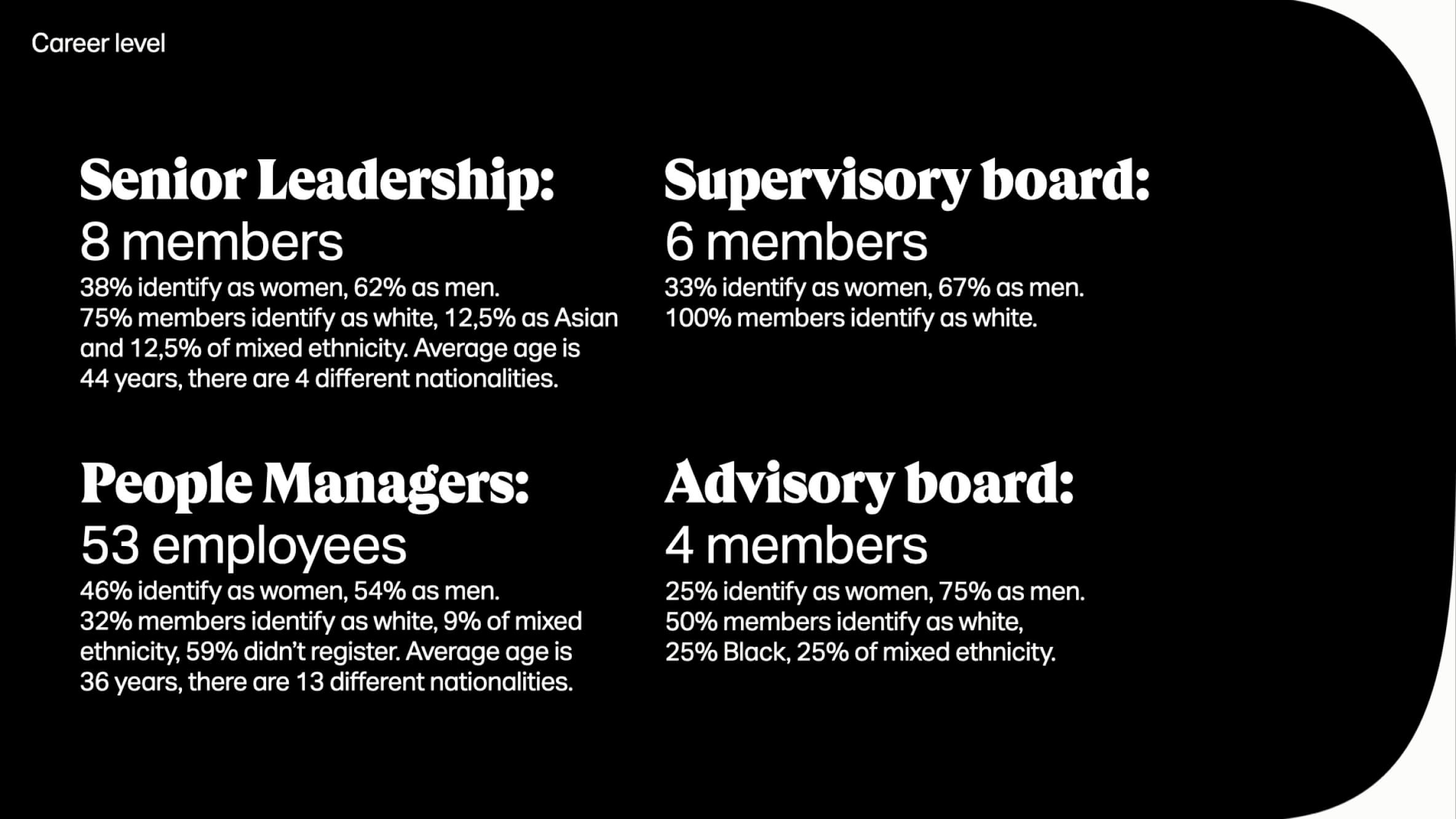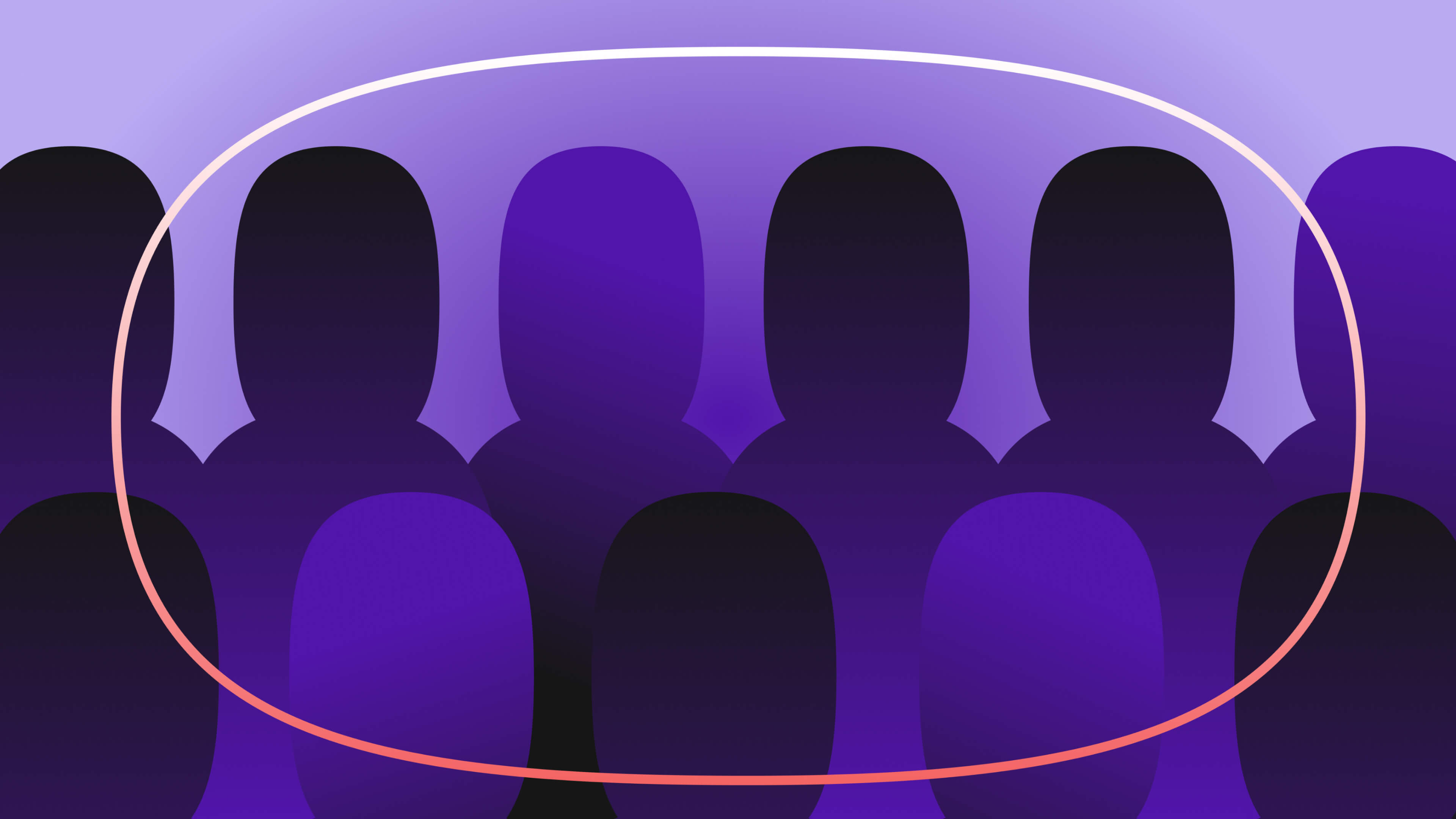Diversity is a tricky word. One that (ironically) can be interpreted in a number of ways depending on where you’re from and how you self-identify.
WeTransfer is a Dutch company based in Amsterdam, but we’ve also branched out to New York, LA and London. And, with a wide range of nationalities populating each office, defining what diversity means to us is harder than we expected.
Dictionary.com describes diversity as “the state of being diverse”, while Merriam-Webster says it’s “the condition of having or being composed of differing elements.” But one of my favorite definitions comes from eXtension who explain, “Diversity is the presence of differences that may include race, gender, religion, sexual orientation, ethnicity, nationality, socioeconomic status, language, (dis)ability, age, religious commitment, or political perspective.”
But when it comes to the workplace, is “being composed of differing elements” enough? Does “the presence of difference” guarantee everyone’s voice will be heard?
Talking the talk
At WeTransfer we’ve always been proud of our contribution to the world – whether that’s donating 30% of our advertising space to creative communities, taking a stand for causes like climate change and gun reform, or our newly-acquired B Corp status.
But we realized we’ve been stopping short of actually building that promise into the fiber of our company. Telling stories on behalf of others isn’t enough. We need to do better internally – particularly when it comes to diversity.
Although we’ve made some serious progress over the past few years, with a workforce made up of over 30 different nationalities and an almost 50-50 gender split, we aren’t as diverse as we hope to be. For example, our six-person HR team may be made up of four different nationalities spanning the ages of 26 to 49, but these team members are all white and all identify as female.
So we decided to crunch some numbers, open up the conversation and put some big plans into action.
How are we doing now?
Across our 200 WeTransfer employees in the Netherlands, the US and the UK:
We have 31 different nationalities
34% of us are in our 20s, 58% are in our 30s and 8% are 40 or older
56% of our employees use the pronoun he/him, while 44% use she/her
When it comes to ethnicity a lot of our employees have a hard time defining their mixed cultural and racial identities. This is something we’re gathering more data on, but for now the majority of our employees identify as white European or American.
So how is this diversity spread throughout the organization?

When we look at our senior leadership, almost 40% of the team identify as women while the rest identify as men. There’s an average age of 44 and although there are 4 different nationalities across the 8 team members, we can still do better in terms of ethnicity and minority representation.
Our team of people managers – that’s anyone who has people reporting directly to them – seems to be a more diverse group. With an almost 50-50 gender split and 13 different nationalities represented, this group is the closest reflection of our WeTransfer user base. It also shows if we’re intentional and focused on developing our talent, being sure to eliminate any barriers to climbing the leadership ladder, we’re looking at a brighter and much more diverse future.
So how can we continue to champion diversity?
Our recent B Corp status shows we’re committed and want to be held accountable for the impact WeTransfer has on the wider world.
Our big goal is to have a majority diverse organization by the end of 2021. This means more than 50% of our employees will be made up of what are considered to be underrepresented groups in the tech industry including, but not limited to, women and people of color.
But this isn’t about ticking boxes. In order to achieve our goal, we must continue our journey as an inclusive employer. To go back to the wise words of eXtension: “Inclusion is an outcome to ensure those that are diverse actually feel welcomed. Inclusion outcomes are met when you, your institution, and your program are truly inviting to all. To the degree to which diverse individuals are able to participate fully in the decision-making processes and development opportunities.”
It’s no good being a diverse organization if not everybody feels welcome or included. A friend of mine, who founded the social enterprise CTalents.nl, uses the metaphor: “being diverse means everyone is invited to the party. Being inclusive means the party is fun for everyone.”
It’s our mission to foster an environment where nobody feels afraid to speak up, because more voices = better ideas. And we deal in the business of great ideas.
The road to a brighter, more diverse future
Change starts from the inside and we’ve already put some practices in place to make sure WeTransfer is walking the walk as well as talking the talk.
Unlearning our prejudice and deconstructing implicit bias By investing in unconscious bias training programs and providing curated educational lists on our internal learning platform, we’ve made sure all employees have access to extensive reading and resources to help better understand their bias and what it means to be an ally. We’re ready to step this up and are now looking for an external partner to help us open up this dialogue and actively engage in issues surrounding diversity and inclusion. We also added an extra day off per country to the WeTransfer calendar this year, marking the day each place celebrates the end of slavery. For our US offices it’s Juneteenth, in the Netherlands it’s July 1st and in the UK it’s August 1st. We encourage our employees to use that day for reflection and learning.
Hiring consciously, purposefully and with intention Over the past few years we’ve invested in visuals, language and exercises to make our application process as inclusive as possible. However, when it comes to recruitment we still have a lot of work to do. We want to give priority to underrepresented groups, those who haven’t had the opportunities and experiences I (as a white female) often take for granted. We’ve put training and workshops in place to remove unconscious bias from our hiring process. We’ll also be using more standardized questions during interviews and working with recruitment agencies based on their capability to hire diverse talent. Finally, for each position we advertise, the final three candidates will all be from different backgrounds.
Building an inclusive work environment Alongside recruiting diverse talent, it’s important we build a company culture that feels inviting, inclusive and where people want to stay. We need to proactively create an environment where people feel comfortable to come as they are – no bias, no judgement, no pretext. This means working hard to find the right tools so our employees can express how they identify while feeling safe and supported in the process.
Finally, we’re digging into the following metrics to see how and where we need to improve:
Is our retention level consistent across all identified groups?
Are our diversity metrics uniform across different departments?
Are our organizational practices perpetuating bias?
As part of our B Corp certification, we committed to being a more responsible company and diversity and inclusion are at the heart of that pledge. And while we’ll continue to use our platform to amplify voices that need to be heard, we’ll be holding a mirror to ourselves as we go.
We want to be held accountable for the products we build, the company we create and the impact we have. This is a difficult and sometimes uncomfortable conversation to have, but it’s important to be transparent. Because if we can inspire one other person, one other company, then we’re making a difference.
Diversity is everyone’s responsibility, let’s stand together and create change beyond this moment.

